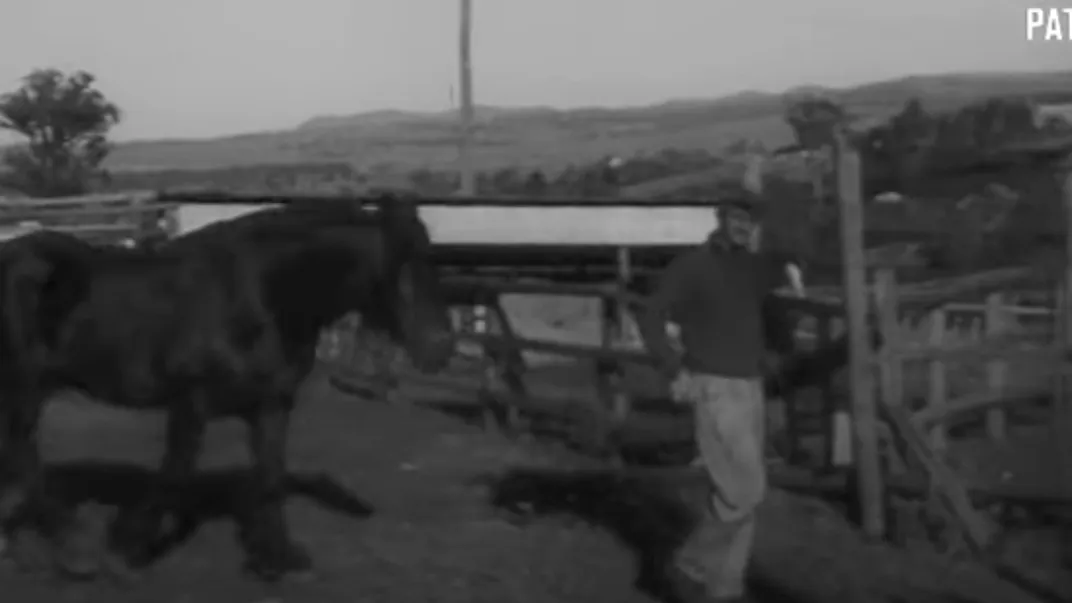What Happened to the Canary in the Coal Mine? The Story of How the Real-Life Animal Helper Became Just a Metaphor
The humble bird, which was employed until 1986, represents an important part of mining history
/https://tf-cmsv2-smithsonianmag-media.s3.amazonaws.com/filer/8a/1e/8a1e34af-4aa0-485c-9958-9c4dd5edd837/canary.jpg)
Never mind the gas—it was automation that got them in the end.
Throughout much of the 20th century, chirping canaries were staples of the coal mining industry. As coal miners descended into the earth—entering a harsh environment often home to poisonous gases like carbon monoxide—they would bring the yellow birds along as safety mechanisms. Because carbon monoxide is clear and odorless, miners needed a method for detecting a leak before it killed them. In the mine, a canary’s collapse let workers know there was poisonous gas in the air and gave them some warning time to evacuate.
But come 1981, the British government was planning the birds’ exodus, in favor of “electronic noses,” gas detectors with digital readings, as the BBC reported at the time. In December 1986, Britain officially outlawed the usage of canaries in the coal mines.
At the time, it was the latest of many changes in the British mining industry, which was a source of great strife in the country through the 1980s. In 1984 and 1985, an enormous miners’ strike halted the industry as workers rebelled against a union-busting government. And another animal was being phased out of mining labor: “Pit ponies,” horses who hauled coal underground, were replaced by automation. The last one retired in 1999.
Though discontinuing canaries’ avian sacrifice was a step toward more humane treatment of animals, miners’ feelings were mixed. “They are so ingrained in the culture,” the BBC reported. “Miners report whistling to the birds and coaxing them as they worked, treating them as pets.”
The canary method was originally conceived by John Scott Haldane, “the father of oxygen therapy.” After an 1896 explosion at Tylorstown Colliery, Haldane was asked to help determine the cause of the blast. He concluded that carbon monoxide buildup was to blame, and he proposed using sentinel species in mines: animals more sensitive to poisonous gases than humans, which can be monitored to measure gas levels. His research on carbon monoxide led him to recommend using birds or mice.
/https://tf-cmsv2-smithsonianmag-media.s3.amazonaws.com/filer_public/e3/53/e353b8c5-beb5-43d0-ba66-53dc99455a52/gettyimages-3404066_web.jpg)
So, how did canaries land the gig? Not only are they small and portable, but canaries also breathe a lot. They need immense quantities of oxygen to enable their flight and to fly at heights that would give humans altitude sickness. Their anatomy allows them to get a dose of oxygen when they inhale and another when they exhale, by holding air in extra sacs, Gizmodo’s Esther Inglis-Arkell wrote. Relative to mice or other easily transportable animals that could have been carried in by the miners, canaries’ breathing habits allow airborne toxins to circulate their bodies quicker. They would exhibit symptoms of poisoning long before gas levels became critical among the workers, giving the men more time to evacuate.
Unsurprisingly, the United States and Canada followed Britain in employing Haldane’s suggestion. And some in the industry made attempts to care for the canary in the coal mine. As curator Lewis Pollard of England’s Science and Industry Museum wrote, some miners carried their canaries in a special cage, designed to revive the birds after carbon monoxide exposure. A container of metal and glass was built to allow the trapped canary to breathe outside air through a vent. Once the canary fell—presumably due to gas poisoning—a miner would seal the cage and open a valve allowing oxygen to flow into the container from a tank attached to its top, while workers evacuated the area.
/https://tf-cmsv2-smithsonianmag-media.s3.amazonaws.com/filer_public/9f/68/9f688569-aa88-4f16-89cb-4962a623c930/gettyimages-514867384_web.jpg)
Though many cages were not so thoughtfully constructed, Pollard wrote that he was relieved to come across the oxygenated canary cage in the museum, because it showed some appreciation for the lives of canaries. “Many miners cared deeply for their canary companions,” he wrote.
With the introduction of the electric nose, those miners lost their yellow, chirping friends. Now, poisonous gases underground are detected by high-tech, hand-held digital readers, as birds have long ceased to be sacrificed for miners’ safety. Still, the canary in the coal mine was an important phase in the industry. As Pollard wrote, the oxygenated bird cage was “cruel to the animal, but it is representative of an innovation in mining practices, and our understanding of gases and bird physiology.”

